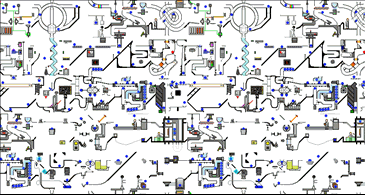I would like to get and actually play the joystick that I got made.
According to my joystick builder Stan, he says it works perfectly fine for every tested system that works with the Paradise Cthulhu system, except NES and tg16 which stand didn’t have working testable machines for. it already passed the test for all the Cthulhu systems that were testable at the time.
Also my theory on how to wire it is also correct because he tested both the left hand port and right hand port arm my system and found that all buttons are arranged in the Capcom Way with mirror mapping for the right hand arrangement, for all systems involved.
Now I have a few things extra I need to have done. I’m trying to see which things fundamentally require the joystick to test out, and which things he can work on on the side, while I play the games that do work.
A list of the chores needed by the end. Only read in intetested or helping answering the question
1 a telephone operator keypad-like device for working with the Atari jaguar and certain systems older than NES. (He has none of those old systems to test them with so again this is going to require me to test it.)
- A 3.5 mm telephone operator button remapper 3.5 mm male to male wire goes in between one input and one output and is designed to be taken away so can be used without it but if you want to change buttons and the game system doesn’t allow you to do it this will do it.
3 certain moldings for attaching real control keypads on the side so that the keys and overlays work correctly. This needs to work with for real controllers from five different systems intellivision ColecoVision standard ColecoVision super action 5200 and jaguar.
-
Direct wiring adapters for Bally Astrocade Sega Master System, and if someone can make an externalizer for a hard-wired Odyssey 2, an odyssey 2.
-
Possibly make the 2600 booster grip attachment add on too, because it treats fully one direction of the panel as off and fully the other direction at on and to those pins represent the player 1 and player 2 analog paddles.
-
The brook universal USB adapter. (by the way how does a headset work for the Xbox one with the brook universal adapter? I never could figure that out.)
-
Wire a PC digital joypad for you as a 5200 fightstick PCB when combined with a Bohoki adapter.
-
Follow the instructions I found how to make a fightstick work as an 8-way intellivision controller, on a system which has 16 separate inputs representing 16 separate directions.
-
Use the Edladdin pre-made PCBs for ColecoVision and 7800.
-
Pad hack an N64, a Wii Classic pro, a jaguar and a 3DO controller. (By the way I can’t find padhack diagrams on at least two of those four namely the jaguar and the 3DO, and maybe the third of the Wii Classic Pro)
-
Add 3 extra buttons as a separate add-on that can plug in the unused port to bring my joystick to 14 buttons + north south east west, which currently fits every system if it has four auxiliary buttons like the Nintendo switch, and a left click and right click for those functions. Also while it’s done that way make it a Pac-Land / Track and Field controller that could be separate in an Atari 2600 and ColecoVision and through the joystick and other programming devices, a PlayStation one and Xbox 360.
-
A safety switch for auxiliary buttons off to prevent pausing and menuing during competitions, unless intending to do so.
I may not be an elevtronics ecpert, but based on my very limited knowledge, i’d say:
A. 1 and 2 require the joystick to make sure the concept of 3.5 mm switching is sound qccording to my system.
B. Stand might need the joystick to accurately make add-ons for the keypad molds to make sure it’s level with the stick and works right.
C. Number 11 might need a Cthulhu to see if the left click, right click, and auxiliary buttons work right.
D. Everything else if I’m right just needs the knowledge of what my DB37 pinout is. And that oattern just needs to be consistently followed. Since he has no equipment to test all my other PCBs, then these should work in the blind.
Hey Stan I’m ready to receive once we establish we don’t need the physical stick to test it, and you don’t have the consoles to test.
